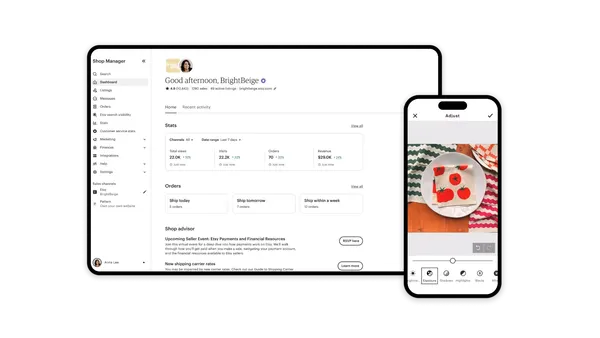This is a pivotal moment for the retail industry. While many retailers are under acute pressure just to survive, those that make it through the pandemic have an opportunity to create a much stronger and more profitable relationship with their customers. But to get there, they will need to move beyond their traditional definitions of customer centricity and work to become truly integrated into the life of the customer.
A strategic shift from customer centricity to customer integration is a critical change of focus and a much harder ambition to realize. But retailers must rise to the challenge. COVID-19 has accelerated fundamental changes in consumer behavior. The pace of change might slow as the pandemic fades, but the retail industry won't be going back to how it used to be.
How can a retailer make itself relevant in this very different world? There are only three routes to integration: invisibility, indispensability and intimacy. In other words, a retailer needs to offer the customer invisible, time-saving convenience; to solve the customer's problems in ways that make it indispensable; or to create experiences for the customer that are so satisfying and rewarding that they choose to make the retailer an intimate part of their life. Success is about delivering the ideal mix of these three components – we call them the "three I's."
Outside of retail, there are examples of companies that have used invisibility, indispensability and intimacy to create integrated customer relationships that have transformed their sectors. Think about how people have changed the ways they watch TV, get taxis, listen to music, talk to their bank, track their fitness – and more. With the pandemic disrupting the consumer's habits around what they buy and how they shop, there's an opportunity for a select group of retailers to rethink their sector. Can they join the few brands that have integrated themselves into the life of the consumer?
Yes, but only if they earn their invitation.
It's not enough to be customer-centric
The relationship between retailers and customers is changing fundamentally, with power and control shifting to the customer. This is something we've been exploring and modeling via the EY FutureConsumer.Now program since 2018. One implication for retail is that the shopper increasingly expects to do business with companies that are simply "there for me" when needed. Retailers can no longer expect the customer to come to them; they have to go to where the customer is. In many cases, that location is online.
Even before COVID-19, consumers were living their lives more digitally, whether to work, learn, socialize, shop or be entertained. At the same time, retail has been diverging into two different forms of interaction. There is "buying", which is about making transactions seamless in order to save time, and there is "shopping", which is about giving the customer an experience that they want to spend time engaging with. As COVID-19 restrictions have forced physical outlets to close, both kinds of retail – buying and shopping – have moved increasingly online.
This move to online has changed what "convenience" means to the customer and what kind of "experience" the customer wants, but their underlying desire for convenience and experience is still there. We feel it's useful to think in terms of three core customer expectations: make my life easier, make it feel better, or make it more fulfilling. These expectations create three areas of opportunity for a retailer to become an integrated part of the customer’s life: become invisible, become indispensable, or become an intimate part of their life experience (just someone the customer wants to spend time with).
The three I's are not mutually exclusive. The challenge is to shape a proposition that delivers value across more than one of them, and to deliver it in a way that competitors can't match.
There are retailers today that are highly skilled at giving each customer the right mix of invisibility, indispensability and intimacy. They make it easy for the consumer to shop online from home, using AI-supported repeat purchase lists and convenient delivery; to listen to music (on subscription) via an omnipresent digital assistant; to enjoy fun cook-along sessions in their own kitchen (having ordered the ingredients to be delivered); and to watch whatever film the family fancies (downloaded from the cloud).
They can guide and shape the customer's choices, consciously or unconsciously, and build deeper connections through services that go beyond selling a product, such as education, health and advice. And they can engage the customer in moments, places and channels beyond "the store", such as the social platforms the customer is using already, the hotels they choose to stay in, and the events they like to attend.
Retailers like these are inside the customer's circle of trust – they are among the few organizations that the customer is happy to accept into their lives. The more the consumer feels and appreciates the value delivered, the more opportunities they will allow the retailer to deepen and widen the relationship. Over time, potentially, their loyalty will grow and they will buy more. This isn't about the retailer locking-in its customers. If you are inside the circle, you can redefine your relationship with that customer. But the only way into the circle is for the customer to invite you.
It's difficult to build and sustain this kind of relationship when competitors are constantly raising customer expectations, especially at a time of extreme uncertainty and financial stress. But it's possibly the only option for retailers that want to exist at scale.
What does it take to enrich a consumer's life?
These are deeply challenging times for retailers, but those that rethink what they offer the customer can become more valued by them. However, they'll need to change the way they do business, develop new capabilities, and move quickly and decisively. For many, curating and selling others' products will mean finding a unique differentiator, owning the full value chain or becoming part of a digital or broader ecosystem.
Three opportunities to build relevance:
- Listen to your customers: understand what they want and when they want it
A critical first step to being considered a trusted retailer is to focus on the customer segments that share your values and buy into your promise. Retailers that try to be all things to all people in the hope of pleasing everyone risk delighting no-one.
Retailers can actively listen to their customers and better identify their needs by building a 360° perspective that encompasses the end-to-end customer journey, from product discovery through to after-sales service. Acceptance into the customer's circle of trust starts with these insights. They give retailers the opportunity to be present and appealing in the micro-moments that matter to the customer.
By integrating what they learn back into their business, retailers can shape and improve what they choose to present to the customer. They can go beyond simply providing personalized promotions and drive deeper customer satisfaction. Also, they can use these data insights to inform operational decision-making in areas such as assortment, replenishment and supply chain. This will create a virtuous circle that delivers value to the customer and to the business.
- Invest or partner to be wherever your customer is whenever they need you
Facing unprecedented change, retailers must find new ways to meet customer needs at scale and speed. Not all the required capabilities can be built in house.
Competition for share of attention will intensify as more companies seek to become part of their customers' lives. To gain trust, retailers need to make better decisions faster. They need to find timely and effective ways to engage or enrich the customer, in digital and physical spaces beyond their own store or app.
Retailers can develop or join networks of like-minded partners to gain faster access to new tools, platforms, skills, services, products, markets and customers. They can also invest in third parties. To stay relevant to the consumer, all parties must trust each other, understand the contribution they each make, and deliver to expectation. They will need to share actionable data that provides clear visibility on what's working and what needs to improve.
- Become a truly data-led business
Customers expect a seamless omnichannel experience that blends the physical and digital. To remain in a circle of trust, retailers must know them well and engage them in ways that feel relevant. But it's hard to make holistic business decisions when you are hampered by operational and channel silos.
Retailers need to connect every part of their business so they can use data in real-time and link the customer journey with suppliers, partners and the rest of the business. It will often take a company-wide rethink of technology infrastructure to create a central and universal data pool. Every area of the business should be involved.
Unsurprisingly, some retailers are hesitant to leverage new technologies and the disruption that comes with them. However, they can provide transformative opportunities to deepen the relationship between retailer and customer. Those with strong analytics capabilities will be in the best position to empower their staff with data. They can then use these insights – and add a human touch – to improve individual customer experience. With the right technology platform in place, a data-savvy retailer can measure the success of their value proposition and improve profitability.
Some retailers are in a better position to make this pivot than others, and many are primarily concerned with navigating the current situation. Those that were changing before COVID-19 have outperformed their rivals. But when other companies are continually raising customer expectations, nobody can afford to be complacent. Those that have been slow to change because they are constrained by their legacy now have little choice. They urgently need to make themselves relevant, especially those that have a significant store presence or depend on selling other companies' products.
But all retailers need to rethink their proposition. The customer is changing faster than ever and retailers that do not change with them risk irrelevance. However, these disruptive times could provide opportunities for retailers to create deeper, more profitable, relationships with the people they serve by better integrating into their lives.










